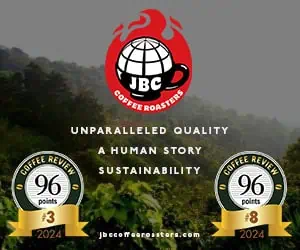Medium bodied but delicate, soft, exquisitely balanced, giddy with sweet fruit tones that may suggest cherry but ultimately express the purity and elegance of a perfectly processed coffee. The finish is sweet, long, and gently rich.
A grandly acidy coffee, austerely tart yet voluptuously sweet. Complicated by hints of green apple or pie cherry, but the main expression is the huge, rich gesture of the acidity. The finish is tart but round and opulent.
The softer style of Kenya: sweet, flirty, utterly seductive, but with a gently acidy backbone. In the aroma crisp temperate fruit tones, apple or pear perhaps, in the cup flowers and chocolate.
Delicate and soft, with a tart sweetness suggesting Meyer lemon. Supple, smooth, elegant.
Medium-bodied, sweet, with the typical wild, slightly fermented Yemen fruit tones, in this case suggesting overripe cherry, apricot, and melon. In the finish the fruit ferment reads as a sort of brandied, bittersweet chocolate. A slight astringency in the finish suggests that during storage this coffee faded a bit, as Yemens quickly do.
A low-toned but resonant, agreeable blend, crisp with tart, berry-toned fruit. Rather lean-bodied but rich in impression. The finish is sweet and balanced.
Low-key, mild, balanced to a fault. Sweet, with the round richness of a good Viennese blend, but ultimately unexpressive and rather inert.
A sweet, fruity Peru that suffers from musty, mildewed tones. The mild musty influence turns the fruit and floral notes pungent, dry, and bittersweet. Pleasantly so, aside from the rather heavy finish.
Moderately acidy, medium to full bodied, sweet, rich, balanced, mid-toned. Not much nuance but a sturdy cup with a juicy tickle of cleanly fermented fruit. Marred by a rather bitter finish.
Very sweet and very, very musty. Somewhere behind the malty, musty/mildew tones a rich, cherry-toned coffee lurks.
A wildly flawed but perversely interesting coffee. Dramatically uneven from cup to cup, with some cups dominated by a heavy and rather oppressive Mediterranean spice character (thyme or rosemary) and others displaying less oppressive and more pleasant floral and bitter fruit tones - in the latter case, imagine bitter-chocolate-covered jasmine petals. All of this aromatic peculiarity probably derives from a combination of mildly fermented fruit with a musty overlay acquired while the still fruit-encased beans were drying.










